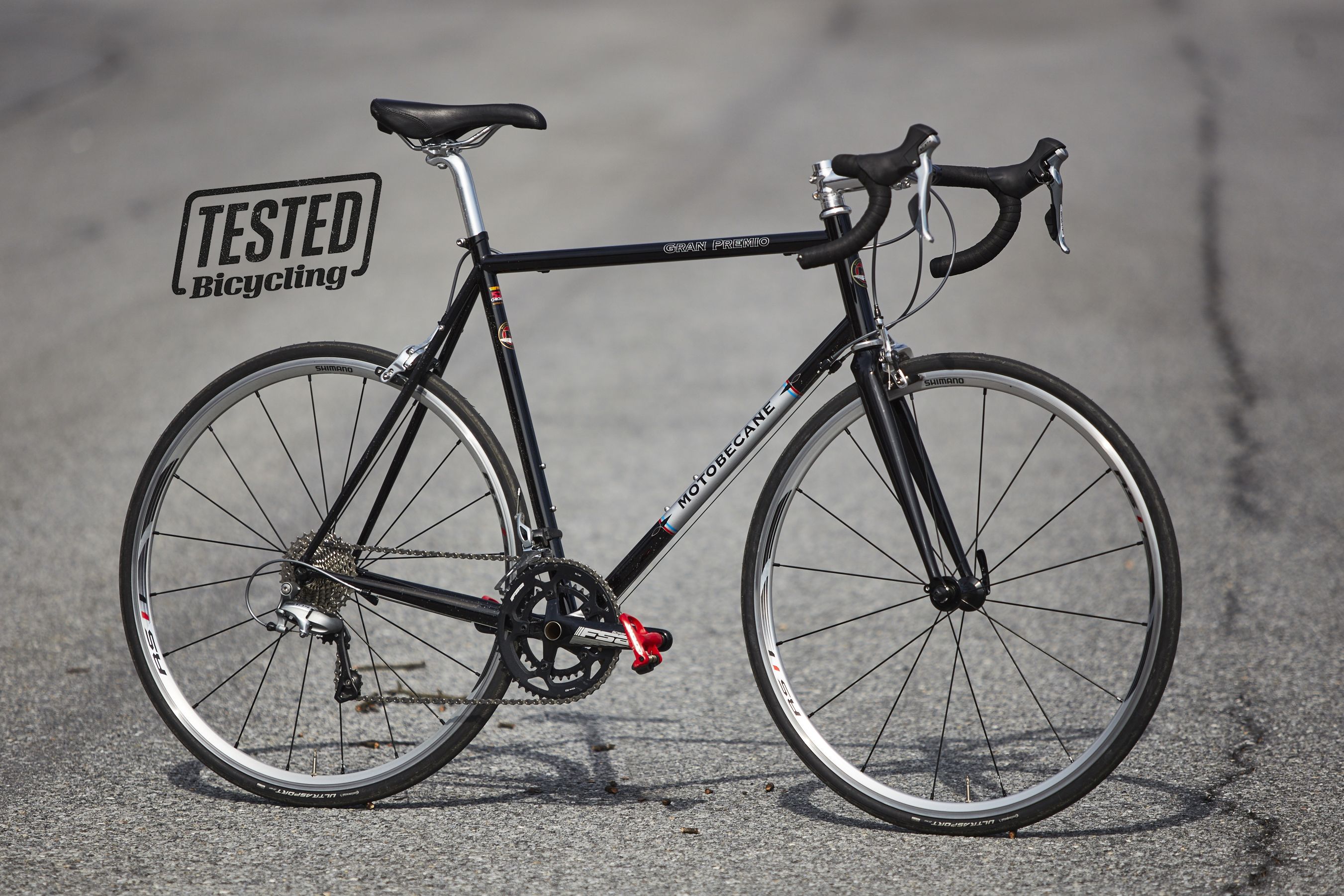

If you’ve ever ridden an older steel road bike, the Gran Premio Elite will feel familiar, in that it feels solid but flexes more than modern aluminum and carbon fiber designs. That means mounting the handlebar and adjusting the brakes and drivetrain, so factor in the cost of assembly if you’re not comfortable doing it yourself. Potential buyers should know that although shipping is free, you’ll have to assemble the bike yourself or pay a local shop to do it. Coupled with relatively short 405mm chainstays, the Gran Premio Elite has aggressive angles-which is not just amusing for casual cyclists, but also ideal for racers wanting a low-cost winter bike that mimics their long riding position. The geometry is old-school and aggressive: There’s a steep 73.5-degree head tube angle, the seat tube angle is also 73.5 degrees, and although BikesDirect doesn’t list a reach measurement, the 585mm effective top tube length indicates a long riding position. On the size 59cm bike, the 110mm stem and 175mm crank felt appropriately sized. The stem, seatpost, and handlebar are aluminum and badged as Motobecane. Tires: Continental Ultra Sport II, 700x25mm Beyond the Components

And because the 105 drivetrain has an 11-speed cassette to the Claris’s 8 speeds, the jumps between gears are tighter (on an equally geared 11-32 cassette), which means smoother shifting and smaller cadence changes. Cannondale and Trek list weights for their bikes in 56cm frame sizes both are claimed to weigh roughly the same as our 59cm Gran Premio Elite, which also has a (typically heavier) steel frame. All use aluminum frames, carbon forks, and Shimano Claris drivetrains-three steps down the Shimano road hierarchy from the 105 drivetrain on the Motobecane. To put that value in context, the Specialized Allez, Cannondale CAAD Optimo Claris, and Trek Domane AL 2 represent the entry-level road bikes you can buy for around $840-850 from a well-established brand. But for getting outside and enjoying the roads, the Motobecane not only looks the part, it’s also one of the smoothest-riding bikes for the money. It’s not explosive under hard pedaling, and if that sensation of stiffness and immediate power transfer is important to you then an aluminum bike might be better. The Tektro rim brakes are underpowered, but shifting from the Shimano 105 drivetrain is fast and crisp, and that makes the Gran Premio Elite feel more expensive than it is. Out on the roads, the ride quality from the steel frame and carbon fork makes crack-laden pavement feel a lot less jarring, and a 73.5-degree head-tube angle keeps the steering sharp.
Motobecane bike reviews full#
It’s also sold by BikesDirect, an online consumer-direct retailer, which means you won’t be able to test-ride before you buy (although you have 30 days to return it and get a full refund). In other words, the Gran Premio Elite is an excellent value proposition on paper. It also has a better-shifting drivetrain than rivals from Trek, Cannondale, and Specialized, and as a matter of opinion, those sporty Shimano RS11 wheels look splendid on the Motobecane’s classic steel silhouette. Allow us to elaborate: The $796 Motobecane Gran Premio Elite isn’t a new design, but the steel-framed roadie is lighter than aluminum competitors and delivers superb vibration damping. If you’re in the market for a new, sub-$1,000 road bike and you think your only option is a bicycle from a major brand with an aluminum frame, a carbon fiber fork, and a lower-end Shimano drivetrain, you’re wrong.

Something We Don’t: The Tektro rim brakes are the opposite of good.What We Love: You won’t find Shimano 105 anywhere else at this price.Who Should Buy It: Anyone looking for an exciting road bike at under $1,000.The Takeaway: Aggressive handling and crisp shifting highlight this high-value roadie.


 0 kommentar(er)
0 kommentar(er)
